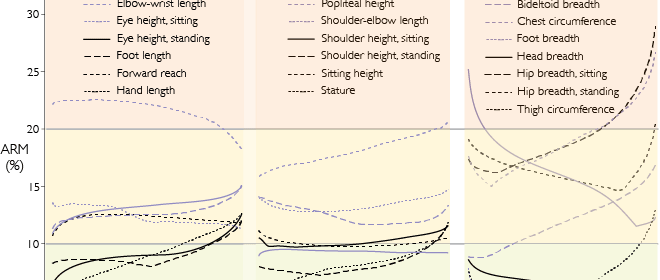This paper proposes a method to identify opportunities for increasing the efficiency of raw material allocation decisions for products that are simultaneously targeted at multiple user populations around the world. The values of 24 body measures at certain key percentiles were used to estimate the best-fitting anthropometric distributions for female and male adults in nine national populations, which were selected to represent the diverse target markets multinational companies must design for. These distributions were then used to synthesize body measure data for combined populations with a 1:1 female:male ratio. An anthropometric range metric (ARM) was proposed for assessing the variation of these body measures across the populations. At any percentile, ARM values were calculated as the percentage difference between the highest and lowest anthropometric values across the considered user populations. Based on their magnitudes, plots of ARM values computed between the 1st and 99th percentiles for each body measure were grouped into low, medium, and high categories. This classification of body measures was proposed as a means of selecting the most suitable strategies for designing raw material- efficient products. The findings in this study and the contributions of subsequent work along these lines are expected to help achieve greater efficiencies in resource allocation in global product development.

